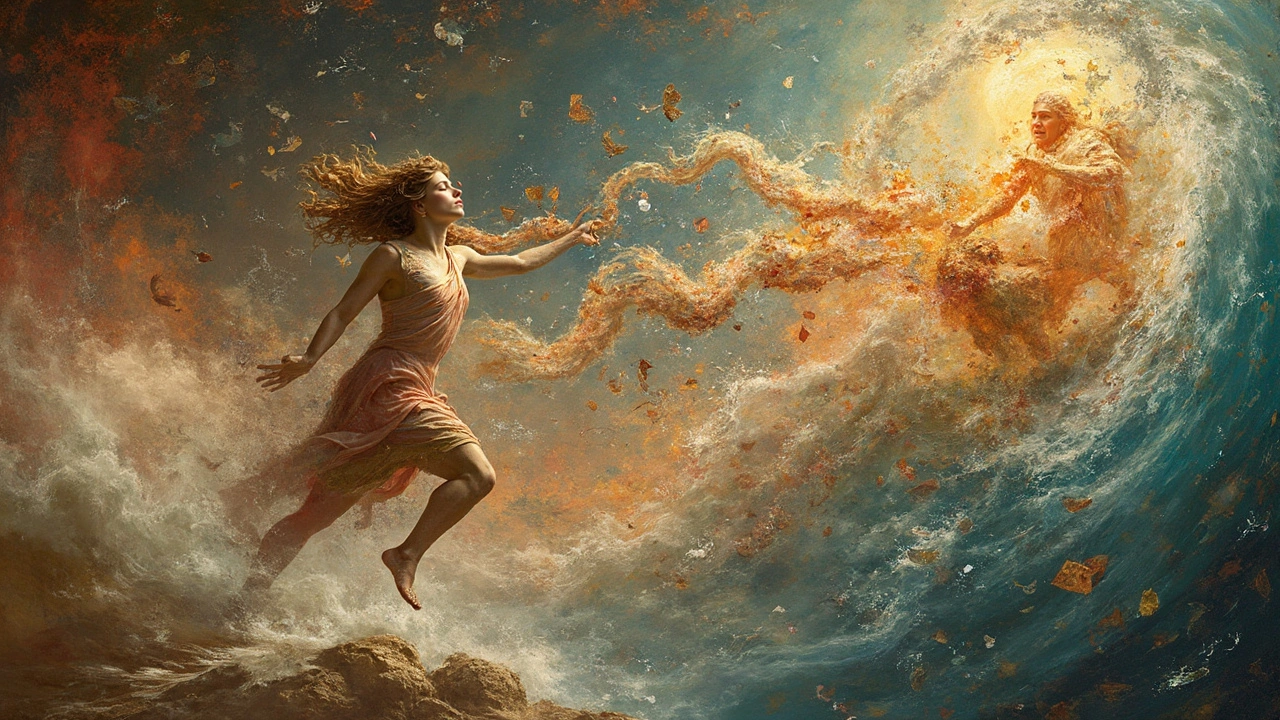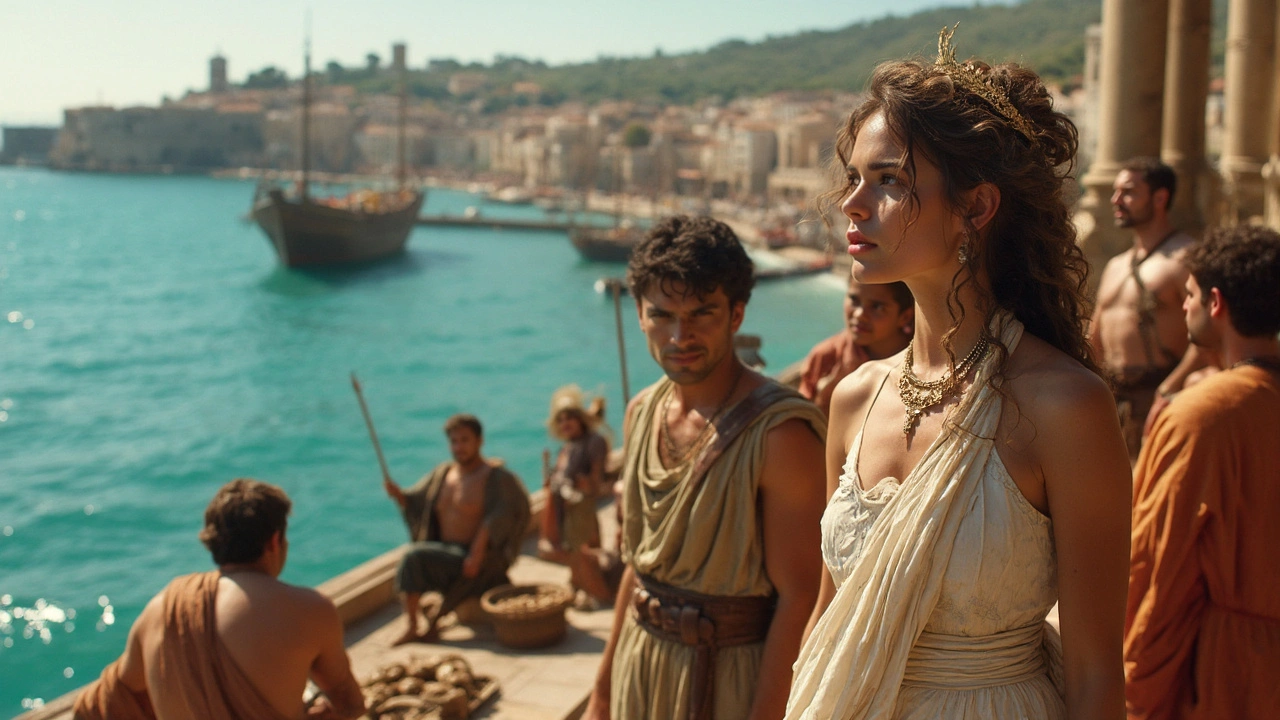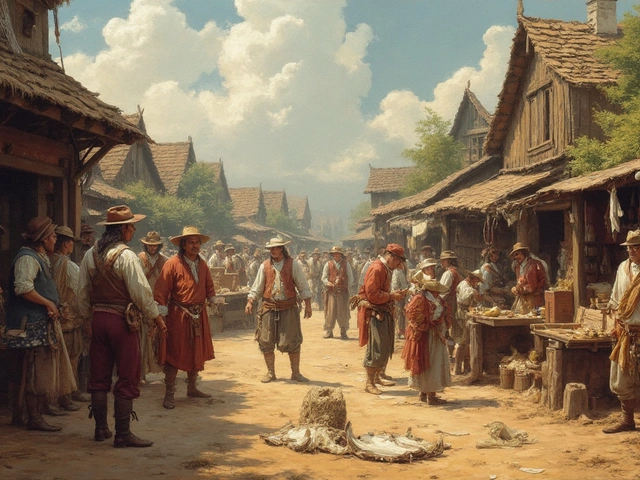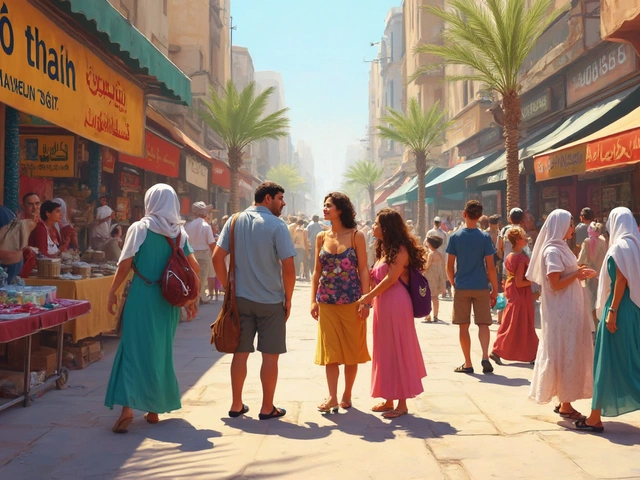Ever picked up a 10 euro note and wondered who's the woman looking back at you? It's not a queen or a famous politician—it's Europa! Yeah, from Greek mythology. Europa's the one who had a bit of a run-in with Zeus, and now she's chilling on our cash.
So, why is Europa on the note? Well, it's a nod to the rich cultural history of Europe. Her story's kind of legendary. Zeus transformed into a bull, kidnapped her, blah blah blah... the drama is real. But that connection to Greece and, let's face it, the awesome story of transformation and adventure, suits Europe's vibe.
Next time you're paying for your coffee, take a look. There's more to the design than you might notice at a glance. Europa was picked to represent unity and identity—big concepts for a small note, huh? Keep reading and you'll get why this mythological lady made the cut on modern currency.
- Meet Europa: The Myth
- Why Europa on the 10 Euro?
- Design Details You Might Have Missed
- How Europa Is Viewed Today
- Fun Facts About the Euro Notes
Meet Europa: The Myth
Alright, let’s dive into the fascinating tale from Greek myth—Europa, the woman lending her name and face to the 10 euro note. In mythology, Europa was a Phoenician princess. She was known for her beauty, of course, and caught the eye of none other than Zeus, the king of the gods.
Now, Zeus's approach wasn't what you'd call conventional. He morphed into a stunning white bull and mixed with her dad's herd. Europa, being curious and maybe a little too trusting, climbed onto the bull. Here’s where it gets wild—Zeus, in bull form, dashed off over the sea and took Europa all the way to Crete!
"The story of Europa embodies a blend of myth, intrigue, and cultural significance that enchants those who delve into its origins." - Dr. Helena Poseidon, Professor of Ancient Mythology
In Crete, Europa bore Zeus several children, including Minos, who later became a king himself. This tale isn’t just a piece of folklore; it reflects themes of adventure and transformation, pretty much illustrating how dynamic and diverse Europe has become.
Why the Myth Matters
Europa’s story wasn’t just some ancient soap opera but held powerful symbolism even back then. Her journey represents bold changes and new beginnings—kind of like European unification itself. It's easy to see why such a myth would resonate with the idea of a unified Euro currency.
From Myth to Money
When the euro was being designed, choosing Europa made sense. Her presence on euro notes isn't random. Her name, her story, even her adventurous spirit ties directly to European identity. It’s about celebrating common roots while pursuing a shared future.
Why Europa on the 10 Euro?
The decision to feature Europa on the 10 euro note stems from her symbolic significance and the blending of myth with modern identity. Europe isn't just a continent; it's home to a multitude of cultures, histories, and languages. So, featuring Europa, the figure from Greek mythology, ties the currency back to a shared heritage that spans the early days of civilization.
The European Central Bank, aiming to create a strong and unified identity, saw Europa as the perfect symbol. She connects different regions under one intriguing tale—her adventures with Zeus reflect themes of unity and transformation, aligning well with the European Union's narrative.
The note designers chose Europa partly because she embodies Europe’s complex history and partly because she's, quite literally, part of its name! Let’s not forget the visual aspect, either. Her portrait on the banknote was adapted from an ancient mosaic discovered in Pompeii. In terms of design, it’s not just about looking cool; it’s about historical authenticity married with modern security measures.
Featuring Europa also serves a practical aspect. Having a character like her means the euro notes don't feature any specific individual from a current member state, avoiding bias or favoritism. It's a clever way to ensure neutrality while keeping things culturally rich.
Want to know more about the design elements? The holograms and watermarks use Europa's image for security. That adds a mythological twist to modern technology.

Design Details You Might Have Missed
You know how every currency has some design quirks you never notice until someone points them out? Well, the 10 euro note is no different. It's more than just paper money—it's practically a canvas of intricate features that celebrate Europe’s past and present.
The Portrait of Europa
First off, Europa’s face isn't just randomly thrown onto the note. It's actually sourced from a 2,000-year-old vase discovered in southern Italy. Talk about historical vibes! This design choice wasn't just about looking pretty; it was about grounding modern currency in ancient roots.
Color Choices
Notice that rich reddish hue? It's distinctive, right? It's all about making each note easy to recognize, so when you're fumbling for cash, you know exactly what you’ve got. Plus, it uses security ink that shifts slightly in color at different angles—sneaky but effective against counterfeit!
Architectural Inspiration
Have you ever looked closer and seen those arches? They're not random! Each euro note features a different architectural style. The 10 euro note has Romanesque elements. It's a subtle nod to the diverse architectural heritage across Europe.
Holograms and Watermarks
Flip the note around. You’ll see a hologram with Europa and the number 10. Watermarks are another cool feature—when you hold the note up to light, Europa’s face appears again alongside the numeral. It’s all carefully designed to keep the note one step ahead of counterfeiters.
Little Known Facts
If you're into trivia, get this: some of the tiny details on the note include microprinting that you might need a magnifying glass to see. They use such fine lines that it makes reproducing them a nightmare for fake currency makers!
| Feature | Detail |
|---|---|
| Portrait | Europa from a 2,000-year-old vase |
| Color | Reddish hue with security ink |
| Style | Romanesque inspiration |
| Security | Holograms, watermarks, microprinting |
These design details aren't just for show; they're there to remind us of our shared history and keep our currency safe. Next time you spend a 10 euro note, take a moment to appreciate the art and thought behind it!
How Europa Is Viewed Today
Today, Europa's name might still ring a bell, but how people view her has taken on new layers, thanks to her face on the euro note. It's like she's been given a new lease of life, showing up in conversations about European identity and unity.
Europa, the character, isn't just seen as some ancient myth. She's now a symbol of what Europe stands for: a blend of diverse cultures, rich history, and shared futures. I mean, it is a bit poetic how a story from the past gets tied up with modern unity, right? She's become kind of an icon for representing Europe itself.
Symbol of Unity and Diversity
Placing her on the 10 euro note wasn't just an artistic choice. It's a nod to Europe's roots and its diversity. In a way, Europa is the embodiment of bringing together many strands of history into one unified culture. She's kind of like a shorthand for 'Hey, we've been sharing stories and mixing cultures for millennia!' So whether you're in Spain, Greece, or Finland, the euro links these countries just like Europa's story links us to the past.
Legacy Carried Forward
Her presence on the euro note is a modern twist to an ancient tale, showing how legends don't just die out—they keep going, morphing into something new. Europa today is more about how we choose to remember and celebrate our past as we look forward to future possibilities.
So, even if you hadn't heard much about Europa before, now, when you spot her on the 10 euro note, you'll know there's more than an ancient tale—it’s about a shared European identity that pushes past, present, and future together.
| Country | Average Usage Frequency of 10 Euro Note |
|---|---|
| Germany | 15% |
| Italy | 12% |
| France | 13% |
The numbers reflect how this humble 10 euro note, featuring Europa, has become a part of daily life across different countries. So next time you hold this note, give a little nod to Europa—a modern symbol rooted in ancient history.

Fun Facts About the Euro Notes
Euro notes are packed with cool details you probably haven’t noticed. Let's dig right into some surprising facts that make these bills more than just money.
The Symbolic Bridges
Every euro note features bridges from different architectural eras. These aren’t real-world bridges but are meant to symbolize connection and cooperation in Europe. Fun fact: the euro note designers chose this theme specifically to avoid favoring any particular country. Efficient, huh?
Hidden Security Measures
To keep counterfeiters at bay, euro notes come with advanced security features like holograms, watermarks, and tiny letters only visible under a microscope. Believe it or not, these notes are checked more than you'd think. “The security of our currency is non-negotiable,” said Mario Draghi, former President of the European Central Bank, in one of his speeches.
“It's about preserving trust and stability across Europe.”
Numbers Game
Did you know there's a secret code embedded in each note’s serial number? It actually tells you where it was printed. Each euro-using country is assigned a specific letter that precedes the numbers. Next time, see if you can spot where your note came from!
Europa Series
The second series of euro notes, known as the Europa series, introduced new improvements. Named after the mythical figure on the 10 euro note, these bills are more durable and eco-friendly. They're designed to withstand wear and tear, which saves on reprinting costs in the long run.
Color and Size Code
Each denomination has its own color and size. Larger denominations are physically bigger, which helps visually impaired users identify them quickly. This is a nice touch to ensure accessibility for everyone in the euro zone.
Isn't it amazing that so much thought goes into the design of these notes? There’s more than meets the eye with these everyday items!






